Amid a rising tide of bricks, Volvo’s 242 lags behind
It’s easy to hold some collecting trends to be self-evident. One is that sporty variants of cars tend to be more desirable and valuable down the road. (See: Volkswagen Golf/GTI, Ford F-150/Lightning.) That’s doubly so if the hotter variant has some relationship (however tenuous) with racing success.
Leave it to Volvo’s professorial 200-series to prove the exception. All three body styles are on the rise, but wagons lead the pack and the two-doors lag behind. Millennial nostalgia apparently outweighs sportiness.
Sportiness, of course, is relative in the world of the 240. Built from 1974 to 1993, the unibody 200-series made its name as a breed of unkillable family cars—safe, dependable transportation you could hand down to your kids, and that they could feasibly hand to theirs. Volvo did make a few turbo models between 1981 and 1985, even daring to put a boosted sedan on the same ad spread as a Ferrari 308, a 911, a Corvette, and an F1 car. The text: “A few car makers who believe in rear wheel drive.”

The bravado was half put-on, of course, and the better part of the humor. Most 200-series were deeply unsexy things, unless you count the shoulder belts and four-wheel disc brakes: Slab-sided two-, four-, or five-door powered by a mechanically fuel-injected four-cylinder borrowed from its predecessor, the 142 (1967–74), a 2.0-liter pushrod affair that made a grand 98 horsepower. The “Redblock” 2.1-liter inline-four that succeeded it in 1976 nudged output to 111 hp, a figure which fell in 1983 to 107 with the 2.3-liter variant. Both the Redblocks and their forerunner came with a choice of manual or automatic transmission.
Bragging rights for these engines are earned by not by output but by mileage. Breaking six figures only begins the conversation, and 200,000- and 300,000- mile cars are commonplace. (There’s precedent here, of course, stretching back to the 3-million-mile Volvo P1800.) These wonderfully over-built Redblocks forgive a multitude of sins, meaning that many are still on the road and running happily after racking up tens of thousands of miles spent on family vacations and school runs.

It’s those thankless activities that are causing the 200-series to appreciate. Among Millennials, the utilitarian wagon is the hottest thing going: Despite comprising only 20 percent of the market, this generation accounts for over half of quotes that Hagerty receives for the long-roof “245” (200-series, four-cylinder, five-door; marketed as such from the factory through 1980). The wagons, in other words, are the most quintessentially Volvo. The five-door (1975–83) earned a spot on our 2022 Bull Market List; but even as their fortunes increase, these durable people-haulers remain eminently practical. In anything but world-class condition, all the 1975–1980 wagons (and the sedans, too) are under $10K. (Zoom out to the entire production range, and wagons are worth an average of 11 percent more than either sedan or coupe.) You can easily find a well-kept daily driver between $5000–$6400, and a slightly ratty one (there are many) between $2000 and $3000.
So what about the coupes—or, in Volvospeak, the 242s? Though worth more than the wagon or sedan, the two-doors aren’t appreciating as quickly: Their 20 percent value increase pales in comparison to the 244 and 245’s 77 and 81 percent gains.
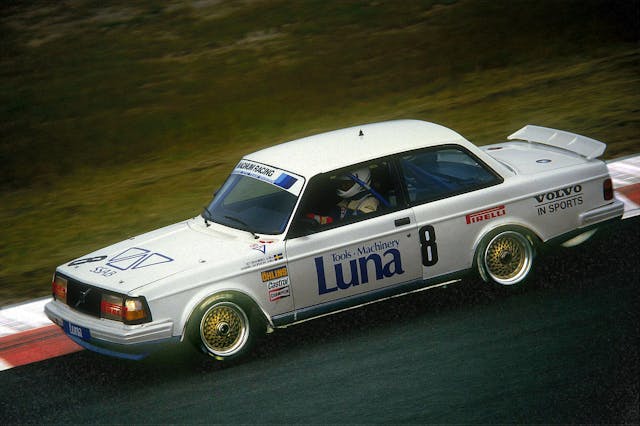
The 200-series coupe has legitimate claim to athleticism, as well. In the ’80s, Volvo campaigned turbocharged 242s under the FIA’s Group A in the European Touring Car Championship. A “flying brick” even won the championship in 1985, besting a roster of Rover Vitnesses, Alfa Romeo GTV6s, BMW 653 CSis, and even a few Mitsubishi Starion Turbos.
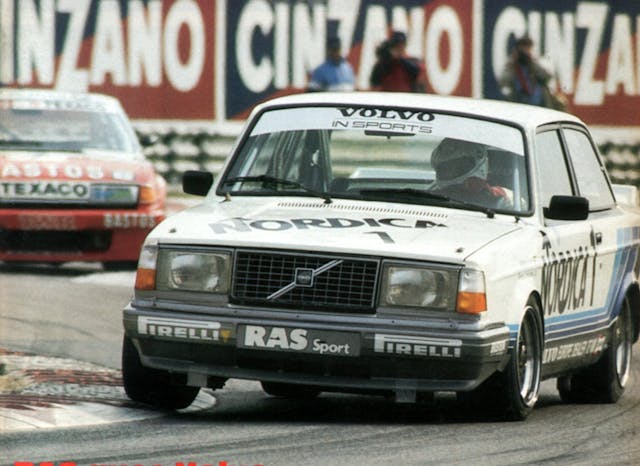
Volvo’s process of homologating the 240 Turbo Evolution for FIA competition remains shadowy to this day: The rumor goes that Volvo shipped 500 kitted-out 242 Turbos to the U.S., where various dealers stripped them of some but not all competition equipment and sold them as “normal” 200-series. These “flathoods,” which crop up at auction from time to time, ostensibly kept the upgrades to engine and suspension but were docked of their rear spoilers. It’s all hazy, but adds a clandestine flair to the story of this otherwise mundane family hauler.
Flathoods aside, Volvo did make a few higher-performance versions of the 242 for normal sale, beginning with the 242GT in 1978. Though it debuted with the 123-hp, high-compression 2.1-liter found in the regular 242, in ’79 and ’80 Volvo swapped in a 140-horse 2.3-liter mill. Stronger sway bars and 30 percent firmer springs gave the car an edgier personality, reflected in positively ostentatious 3M tape stripes in red and black. These are the most expensive of the affordable 200-series cars, commanding $3100 over a base 242 in #2 (Excellent) condition value and $2400 in #3, or driver quality, condition.
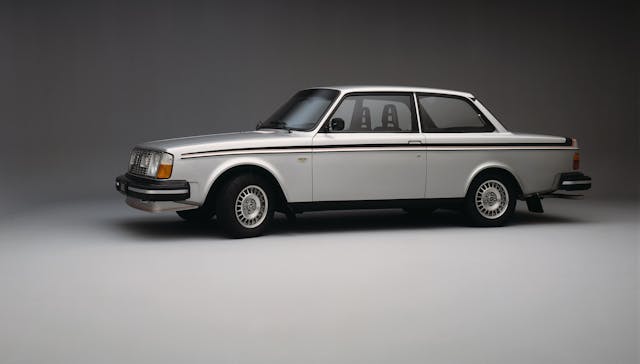
Ironically, increased performance doesn’t translate to more interest—at least, not among millennials.
The coupes are, however, drawing an unusual amount of interest from Gen Z, a generation that accounts for 7 percent of the collector vehicle market but 11 percent of 242 quotes. The age, not the percentage, is important: Fewer Gen Zs grew up with 240s, and their interest is less likely to be driven by nostalgia. Could the understated, affordable 242 become hip with the youth?
Only time will tell—but the bricks aren’t in any danger of extinction.

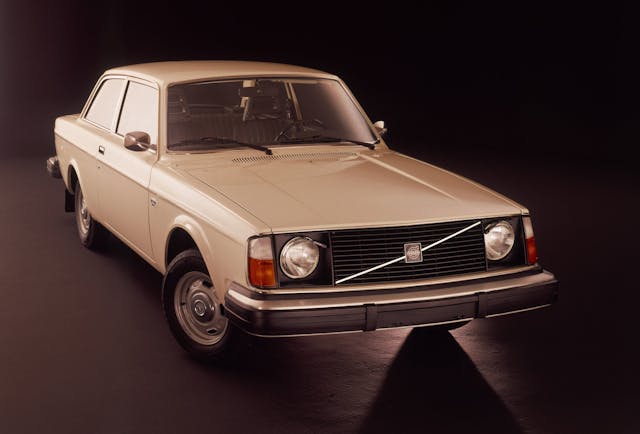
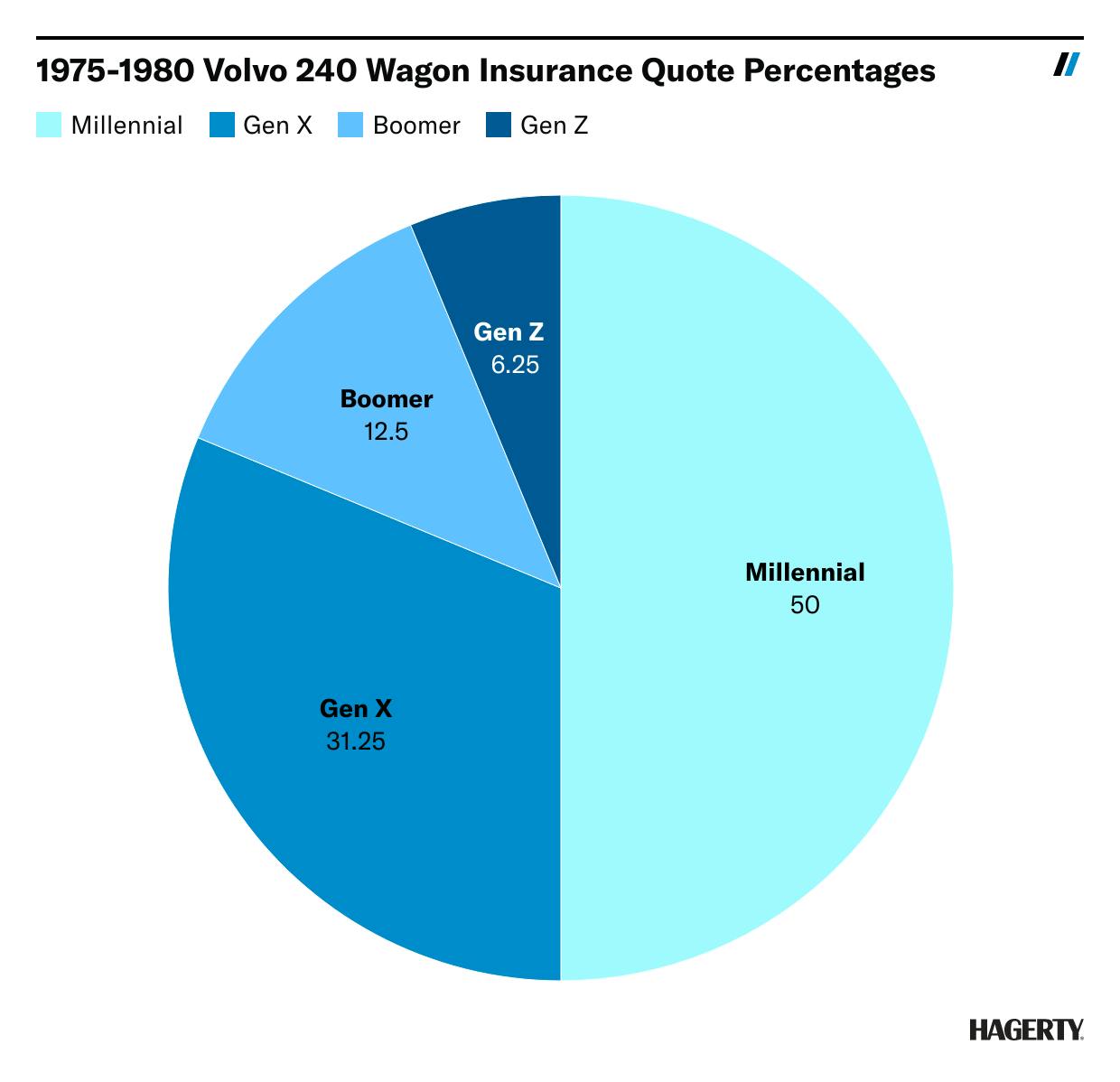
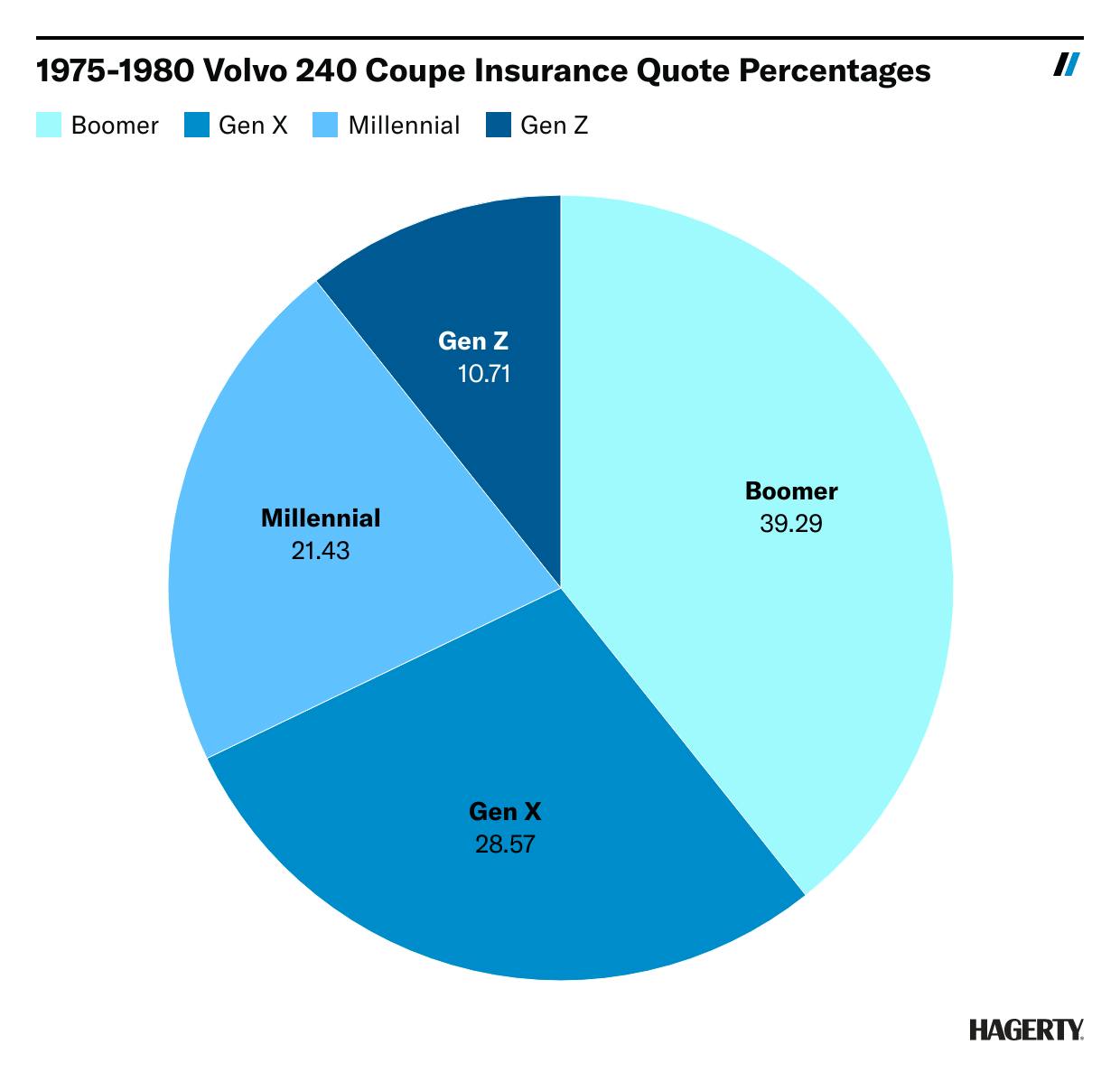


I didn’t wake up wanting to be a pedant, but I kinda have to be that guy, given how much the word coupe is used in this article. I’m sorry but the 242 is decidedly not a coupe, it’s a 2-door sedan. The roof stampings, rear window, wheelbase, back seat, floor pan are all shared between the 4-door 244 sedan and the 242. The only difference is in the body sides – door length, B-pillar location, rear quarter panel and quarter windows.
What this translates to is a nice roomy back seat (for a 2-door) but some silly long front doors and no real advantage in terms of sportiness compared to the 244. That being said, I’ve had several 242s and prefer the look of them infinitely to a 244, despite the reduction in practicality.
Detroit used to pump out 2-door sedans, 2-door hardtops, and 2-door wagons to go along with all of their 4-door brothers. At some point in this country we lost the distinction between coupe and sedan. It’s not really about the number of doors, more like low swooping roofline vs. tall practical roofline with a big greenhouse.
Volvo *did* make a proper coupe in the 200-series, the oft-forgotten 262C Bertone. It had a factory chop top and a PRV V6. Styled by Swedes, built by Italians… isn’t that the opposite of what you’d want?